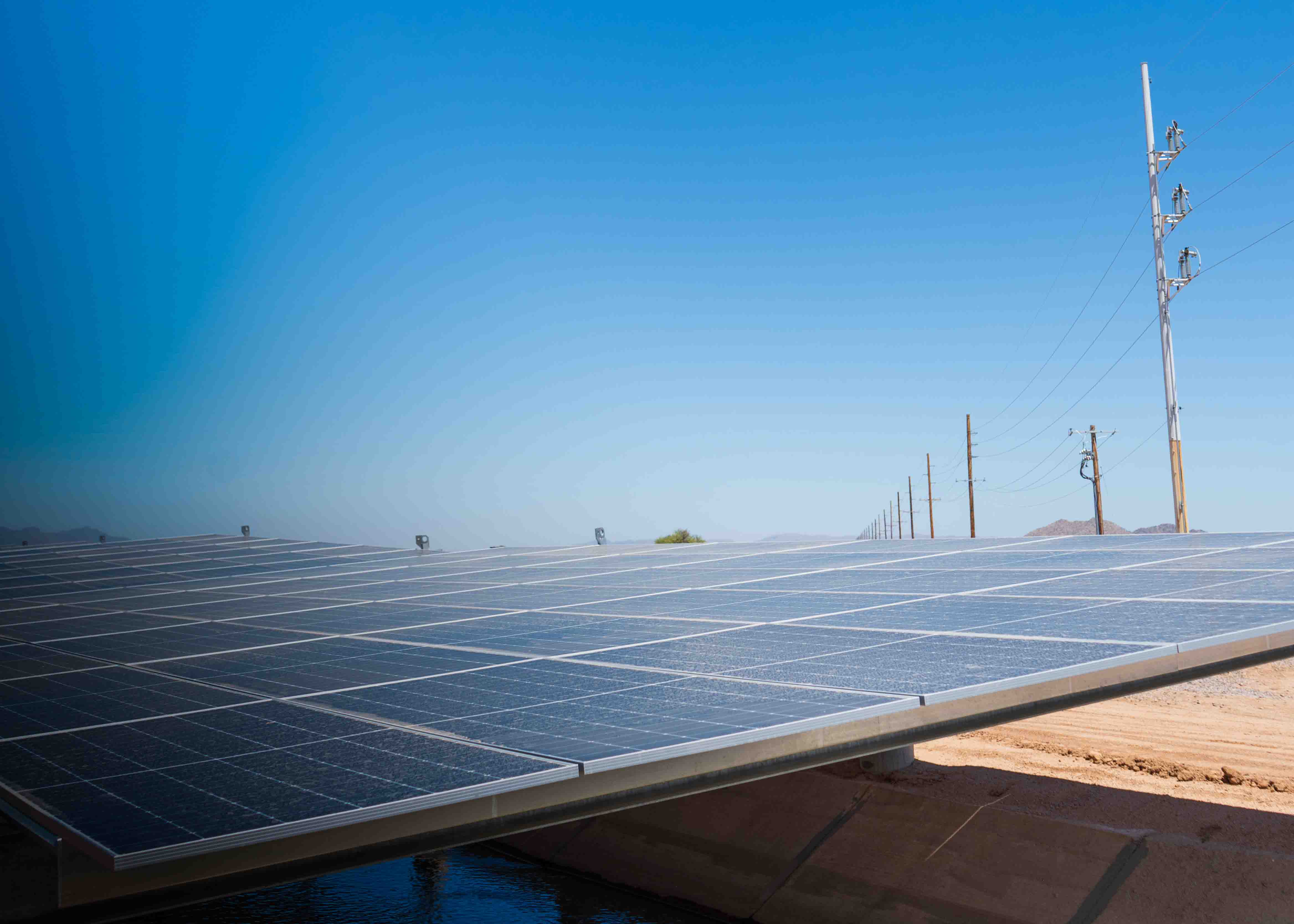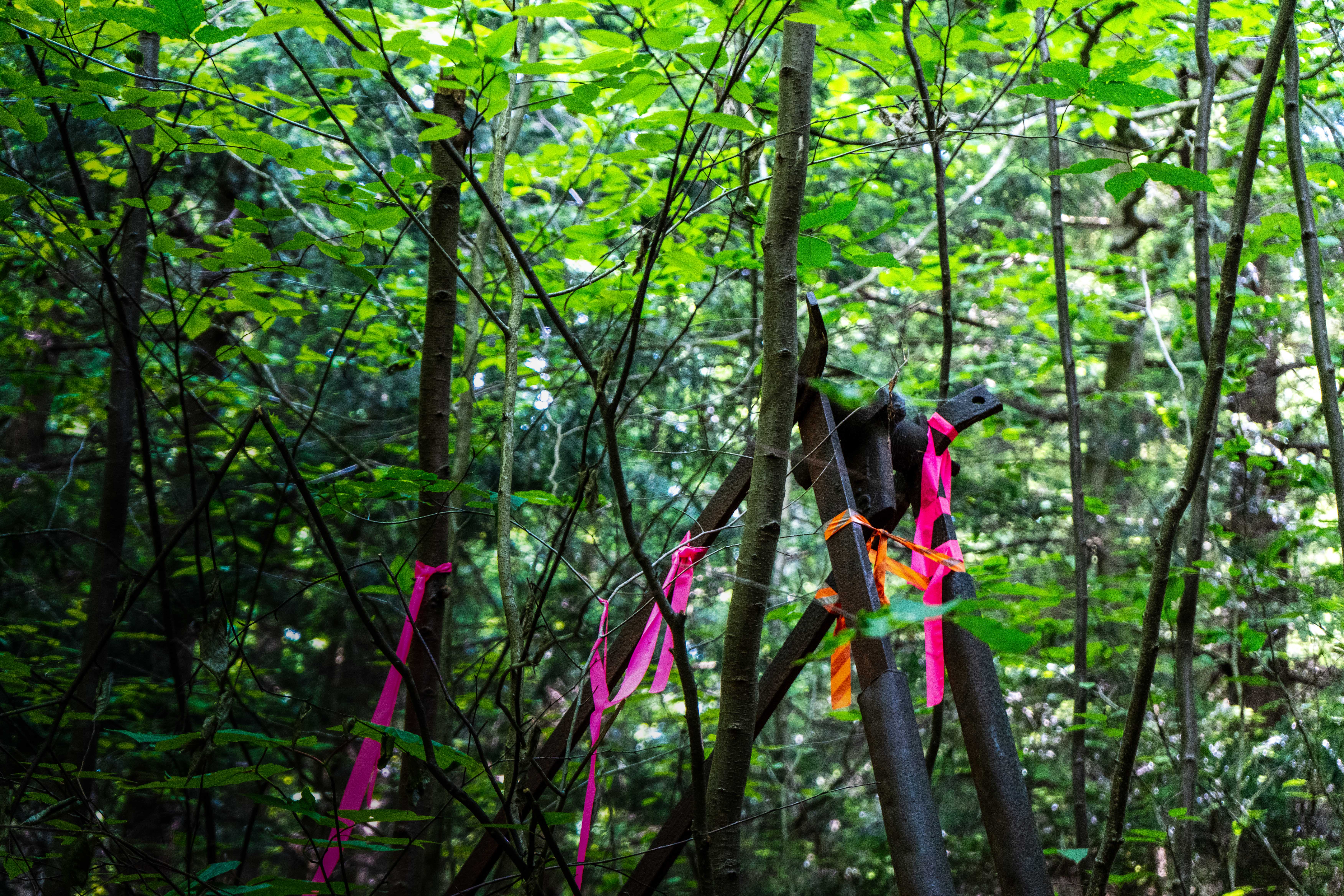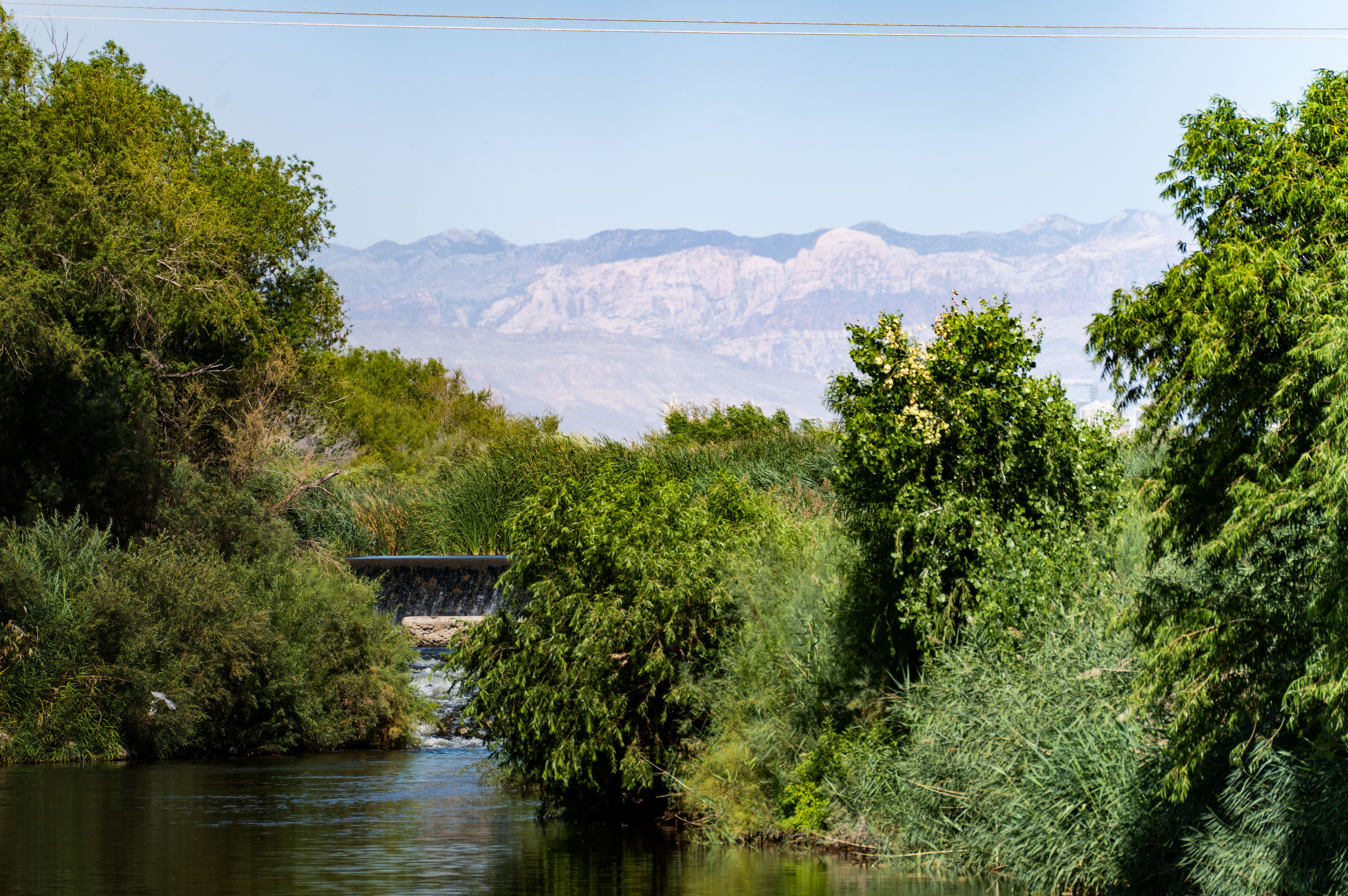Climate Wins
Climate Wins
During the 117th Congress, House and Senate Democrats worked with President Joe Biden to pass two of the most important legislative packages of our generation — the Infrastructure Investment and Jobs Act (IIJA) and the Inflation Reduction Act (IRA), which were signed into law on Nov. 15, 2021, and Aug. 16, 2022, respectively. Together, these bills include the largest investments in climate & clean energy in history.
Since becoming law, the Biden-Harris administration has been hard at work putting these historic investments into place as the cornerstone of its game-changing Investing in America agenda. IIJA and IRA projects and programs are being deployed all over the country, where they are creating good- paying jobs, strengthening local economies, investing in communities that have been left behind too long, and building a safer, cleaner, more climate-resilient future for all Americans.

Rebuilding & Restoring Coastlines
Healthy coasts help protect the nearly 130 million Americans — or 40% of the population — who live in coastal counties.
They also protect the more than 3.5 million U.S. citizens and U.S. nationals who live on islands that make up the U.S.-affiliated Insular Areas, including both the U.S. Territories and Freely Associated States. For the Insular Areas, the impacts of climate change are exacerbated by historically unequal access to federal programs, an over-reliance on fossil fuels, and degrading infrastructure.
Healthy coasts help keep Americans safe in the face of rising sea levels and more frequent & intense storms.
When coastal wetlands are healthy and robust, they provide a natural physical buffer against storms by absorbing and dispersing rising water levels and helping to diffuse waves as they reach the shore. Healthy wetlands also help prevent erosion and landslides.
Our coasts are essential to local, national, and global economies.
Coastal counties produce more than $9.5 trillion in goods and services each year and support more than 58 million jobs (fishing, tourism, real estate, defense, and other industries). In addition, ocean-based tourism and recreation contributes about $143 billion to the GDP each year while employing nearly 2.5 million people. The top employers are California, Florida, New York, Hawaii, and New Jersey.
Climate Benefits
The ocean is the world’s greatest ally against climate change — and coasts are an essential part of that equation.
The ocean generates 50% of the oxygen we need, absorbs 25% of all carbon pollution, and captures 90% of the excess heat generated by carbon pollution. Coastal wetlands can absorb carbon pollution at up to 4 times the rate of terrestrial forests.
Coastal and marine environments, like kelp forests, mangroves, and coral reefs, are rich habitats essential to maintaining biodiversity.
Biodiversity and climate change are inextricably linked. A more biodiverse environment is more resilient to climate change and better able to absorb carbon pollution from the atmosphere.
Democratic-Secured Investments
$3 BILLION
for NOAA to support vital ecosystems by restoring marsh habitats, protecting corals from climate stress, reopening stream and river passage for fish, and more. (IIJA)
$2.6 BILLION
for NOAA to support coastal resilience and conservation, restoration, and protection of coastal and marine habitat and resources, including fisheries. (IRA)
$25 MILLION
for DOI to support Native Hawaiian climate and resilience programs and $15.9 MILLION for climate and resilience programs in the U.S. Territories. (IRA)
Water is life — and essential to public health and safety.
Clean, safe drinking water systems protect us from viruses and bacteria and help us maintain good hygiene and washing practices. In addition, rehabilitating and replacing aging water infrastructure and investing in new, stronger, more climate- resilient infrastructure helps maintain water supplies during extreme weather events when safety can otherwise be at risk. New water infrastructure also helps revitalize communities that have struggled with unreliable water resources for too long, including rural and tribal communities. Tribal communities in particular have long been denied their legal rights to sufficient water.
New water infrastructure projects create jobs and keep prices low for families.
The construction of water recycling and other projects creates technical and highly skilled labor positions. These projects also increase water supplies through conservation, water- use efficiency, and improved water delivery, making it more efficient and affordable for communities over time. Water reuse projects that capture stormwater can also prevent sewers and other infrastructure from being overwhelmed and needing repair.
Recycling water and using water more efficiently conserves groundwater.
All new developments and countless industries, from data centers to manufacturing, require water as either
an input, energy source, or cooling agent. Reliable water in the West is also critical to U.S. agriculture; the Colorado River System alone supports about 15% of the country’s farmland.
Climate Benefits
Newer, more efficient water infrastructure reduces carbon pollution from our water system.
Globally, water use, storage, and distribution account for 10% of carbon pollution. In addition, wastewater treatment plants are a major source of methane, a pollutant that warms the atmosphere at 80 times the rate of carbon dioxide. Upgrading this infrastructure can effectively reduce methane emissions.
Recycling water and using water more efficiently conserves groundwater.
Water recycling and re-use projects use water more efficiently, which reduces how much groundwater is withdrawn from aquifers. Groundwater is the largest store of fresh water and is less likely to be affected by evaporation, making it a critical water source in times of drought. Groundwater also helps to maintain cooler temperatures in surface water bodies, which are being threatened by climate change.
Conserving water and improving water quality in natural environments protects fragile riparian ecosystems and promotes biodiversity.
Biodiversity and climate change are inextricably linked. A more biodiverse environment is both more resilient to climate change and better able to absorb carbon pollution from the atmosphere.
Democratic-Secured Investments
$8.3 BILLION
for Bureau of Reclamation (Reclamation) to support water infrastructure projects. (IIJA)
$4 BILLION
for Reclamation to support projects to mitigate drought in the Colorado River Basin and other basins experiencing drought. (IRA)
$2.5 BILLION
for DOI to fund previously authorized tribal water rights settlements. (IIJA)
$550 MILLION
for Reclamation to support domestic water supply projects in underserved communities or households without reliable water supply. (IRA)

Strengthening Our Response to Wildfire
A stronger response to wildfire keeps families and communities safe.
More than 70,000 communities and 44 million homes are in the wildland-urban interface (WUI) putting them at risk of harm or property destruction. Effectively managing wildfire risk through collaboration and consensus can protect millions of people and save untold costs in property damage. It can also protect communities’ water quality by preventing erosion of sediment and ash into waterways.
Better-managed wildfire risk can save communities and taxpayers hundreds of billions.
When combining costs from property damage, health impacts, watershed pollution, income loss, and other harms, the Joint Economic Committee estimates that climate-exacerbated wildfires in the U.S. cost up to $893 billion per year, or around 4% of our GDP.
Pay increases and resources for wildland firefighters promote more sustainable job opportunities and help maintain a well-trained workforce, which is critical to public safety.
Federal wildland firefighters are facing longer, more intense, and increasingly dangerous fire seasons. Increasing pay, providing career advancement opportunities, and supporting mental health and wellness incentivizes more senior, highly skilled firefighters to stay in the federal workforce, rather than leaving for the private sector. Institutional knowledge and experience are critical in a field as high-risk as wildland firefighting.
Climate Benefits
Focusing on conservation, managing wildfire risk, and prescribed burns promotes healthy forests and landscapes, which absorb carbon pollution.
According to USFS, America’s terrestrial forests absorb about 12% of the country’s carbon emissions each year, which is then stored in trees and soils.
Well-managed wildfire risk protects ecosystem health and promotes biodiversity.
Well-resourced federal agencies can manage wildfires and prescribed burns in a way that supports fire as a natural and necessary part of the ecosystem. More natural ecosystems are inherently more biodiverse, more resilient to climate change, and better able to absorb carbon pollution from the atmosphere.
Democratic-Secured Investments
$8.25 BILLION
for DOI, USFS, and NOAA to reduce risks from wildfires, detect wildfires, institute wildland firefighter workforce reforms, and build more resilient infrastructure. (IIJA)
$5 BILLION
for USFS for fuels and forest health treatments to protect communities from wildfire and for competitive grants to non- federal forest landowners. (IRA)
$1.8 BILLION
for USFS to reduce hazardous fuels on national forests within the wildland-urban interface. (IRA)

Supporting Indigenous Communities
Investing in Indian Country supports a moral, ethical, and legal obligation to honor tribal sovereignty and advance tribal self-determination.
The country’s long history of settler colonialism and broken promises compels the federal government to take bold action to deliver on its trust and treaty responsibilities through directed investments and to strengthen nation-to-nation relationships through meaningful tribal consultation.
As of August 2024, the IRA has created more than 334,000 good-paying clean energy jobs in communities across the country, including tribes.
By delivering funding directly to tribes, these investments ensure that tribal communities reap the benefits of new infrastructure and energy projects, including workforce training, new jobs, and economic revitalization.
More resilient and reliable sources of water and energy help lower costs and improve public health.
As climate change causes increasingly extreme temperatures and weather events, power outages are more frequent, and access to clean drinking water is more inconsistent, putting wellbeing at risk, especially in
rural, underserved tribal communities. By modernizing and building new infrastructure, these investments create more stability and affordability for tribes.
Climate Benefits
The most sustainable climate solutions are those that are informed and led by the most impacted communities, including tribes.
Tribes are disproportionately on the frontlines of climate change, so they must have the opportunity to inform climate solutions if we want those solutions to have lasting change. Providing direct funding to tribes for climate programs in their communities is imperative.
Indigenous Traditional Ecological Knowledge (ITEK) is an invaluable body of science that can promote a more sustainable relationship between humans and the environment.
ITEK is the body of knowledge, practices, and beliefs gained through the stewardship of the environment that has been passed down from generation to generation. Tribally led projects that incorporate ITEK can be effective in promoting more natural, biodiverse ecosystems that are more resilient to climate change.
Tribal water rights settlements create more certainty for all water users, which helps facilitate smarter water management in the face of drought.
Tribal water rights settlements provide access to water for tribal communities that have historically been deprived of adequate water. This is especially important in the West, where climate change is drying up already scarce water resources, and litigation over water rights can delay and complicate water negotiations and conservation. Managing water sustainably is a critical piece of our climate response.
Democratic-Secured Investments
$2.5 BILLION
for DOI to fund previously authorized tribal water rights settlements. (IIJA)
$235 MILLION
for DOI to support tribal climate resilience efforts, including fish hatcheries, and $25 million for Native Hawaiian climate and resilience programs. (IRA)
$216 MILLION
or DOI to support tribal climate adaptation efforts and community relocation and $200 MILLION to improve the safety of dams, water sanitation, and other facilities. (IIJA)
$12.5 MILLION
for DOI to provide emergency drought relief for tribes. (IRA)

Cleaning Up Abandoned Mines & Wells
Cleaning up abandoned wells and mines improves public health and environmental health.
Millions of Americans live within a mile of an abandoned mine or well. When improperly plugged or reclaimed, these sites emit harmful gases or leach toxins into soil and groundwater. In fact, as many as 10% of abandoned mines have released toxic heavy metals, acidity, and radioactivity into waterways. In addition, when groundwater flows into open pit mining sites or mine waste tailings, it creates acid mine drainage, which can wipe out wildlife and contaminate drinking water. Cleaning up mines and wells can restore soil and water quality to their original conditions.
Cleaning up abandoned mines and wells makes communities safer.
Abandoned mines and wells are a safety hazard — ones that can become more dangerous over time as sites or old equipment degrades. People or wildlife can fall into open mine shafts or water-filled pits and quarries. From 2000-2013, abandoned mines killed 381 people and injured 152 more. Abandoned wells often have degraded, dangerous equipment and can create sinkholes and flooding. They have even caused blowouts and explosions in nearby neighborhoods.
More resilient and reliable sources of water and energy help lower costs and improve public health.
As climate change causes increasingly extreme temperatures and weather events, power outages are more frequent, and access to clean drinking water is more inconsistent, putting wellbeing at risk, especially in rural, underserved tribal communities. By modernizing and building new infrastructure, these investments create more stability and affordability for tribes.
Climate Benefits
Abandoned oil and gas wells often emit methane, a pollutant that warms the climate at 80 times the rate of carbon dioxide.
They also often emit other climate harming gases, like benzene and hydrogen sulfide. Depending on the type and structure of mine, abandoned mines can also emit methane and other climate-harming gases. Cleaning up abandoned mines and wells can effectively eliminate these harmful sources of climate pollution.
Cleaning up abandoned mines and wells can promote biodiversity by restoring wildlife habitats and water sources.
Biodiversity and climate change are inextricably linked. A more biodiverse environment is both more resilient to climate change and better able to absorb carbon pollution from the atmosphere.
Democratic-Secured Investments
$11.3 BILLION
for DOI to reclaim abandoned mine lands, plus $25 MILLION for DOI to help states update their abandoned mine land inventories. (IIJA)
$4.7 BILLION
for DOI to establish new well plugging, remediation, and reclamation programs on federal, state, tribal, and private lands. (IIJA)


